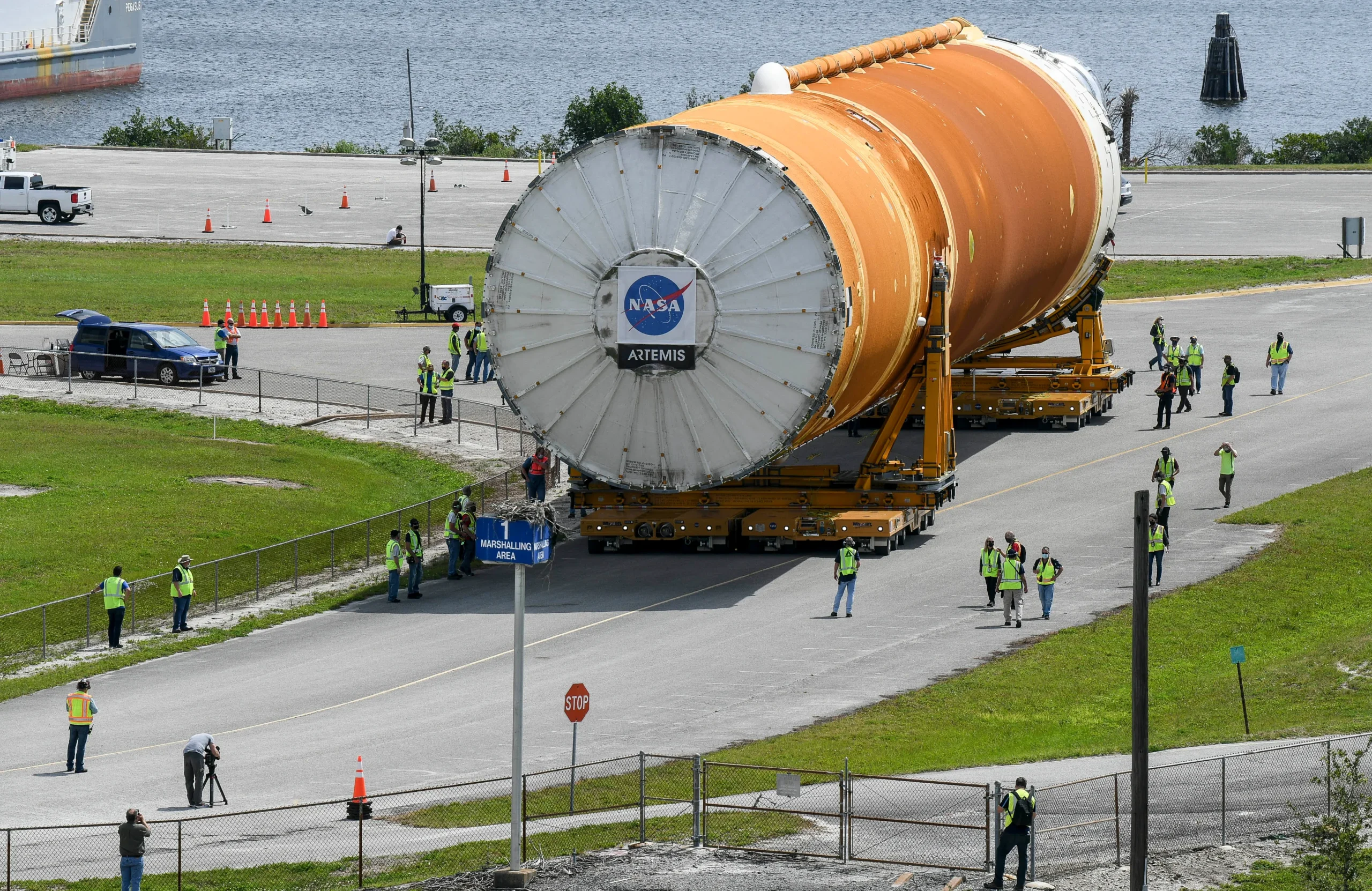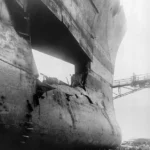NASA’s history is filled with ambitious projects that pushed the boundaries of space exploration. While many celebrated missions like Apollo and the Space Shuttle program captured public attention, numerous lesser-known initiatives could have revolutionized space travel.
These forgotten NASA projects ranged from nuclear-powered rockets to inflatable space stations. Some proposed concepts, if successfully developed, might have dramatically accelerated humanity’s journey to Mars and beyond. Their potential impact on space exploration remains a subject of fascination for scientists and space enthusiasts alike.
Exploring these overlooked endeavors offers insight into NASA’s innovative spirit and the challenges of space technology development. It also raises questions about how different our current space capabilities might be if some of these projects had come to fruition.
Context of Space Exploration
Space exploration has evolved significantly since its inception, shaped by geopolitical factors and technological advancements. The journey from early rocket tests to modern missions reflects changing priorities and expanding capabilities.
The Space Race Era
The Space Race began in the 1950s, fueled by Cold War tensions between the United States and the Soviet Union. On October 4, 1957, the USSR launched Sputnik 1, the first artificial satellite to orbit Earth. This achievement shocked the US, spurring rapid advancements in space technology.
NASA was established in 1958 as a direct response to Sputnik. The agency quickly developed the Mercury program, aimed at putting Americans in space. Meanwhile, the Soviets continued their streak of firsts, with Yuri Gagarin becoming the first human in space on April 12, 1961.
Project Apollo marked the pinnacle of the Space Race. On July 20, 1969, Neil Armstrong and Buzz Aldrin became the first humans to walk on the Moon. This historic achievement effectively ended the Space Race, shifting focus to new frontiers.
Transition to Contemporary Missions
The post-Apollo era saw a shift towards more practical applications of space technology. NASA launched Skylab, America’s first space station, in 1973. This paved the way for long-duration space missions and international cooperation.
The Space Shuttle program, operational from 1981 to 2011, revolutionized space transportation. It enabled frequent launches, satellite deployment, and construction of the International Space Station (ISS).
Robotic exploration became a key focus in the late 20th century. Missions like Voyager, launched in 1977, continue to provide valuable data from the outer solar system. Mars exploration intensified with rovers like Sojourner, Spirit, Opportunity, and Curiosity.
Commercial spaceflight emerged as a significant trend in the 21st century. Companies like SpaceX and Blue Origin are developing reusable rockets, potentially reducing the cost of space access.
The Visionaries of NASA
NASA’s history is filled with brilliant minds who pushed the boundaries of space exploration. Their groundbreaking ideas and collaborations with industry pioneers shaped the agency’s most ambitious endeavors.
Notable NASA Scientists and Engineers
Werner von Braun led the development of the Saturn V rocket, which powered the Apollo missions to the Moon. His expertise in rocketry was instrumental in America’s early space achievements.
Katherine Johnson’s mathematical calculations were crucial for orbital mechanics and space trajectories. Her work ensured the success of numerous NASA missions, including John Glenn’s historic orbital flight.
Gene Kranz served as flight director for several Apollo missions. His leadership during the Apollo 13 crisis showcased NASA’s problem-solving capabilities under extreme pressure.
Collaborations with Private Sector Pioneers
NASA partnered with North American Aviation to develop the X-15 hypersonic aircraft. This collaboration pushed the limits of high-speed, high-altitude flight and paved the way for future spacecraft designs.
The agency worked closely with Grumman Aerospace Corporation to create the Apollo Lunar Module. This partnership resulted in the first crewed vehicle to land on another celestial body.
SpaceX’s collaboration with NASA on the Commercial Crew Program revolutionized space transportation. Their joint efforts led to the development of the Crew Dragon spacecraft, restoring American capability to launch astronauts from U.S. soil.
Key Concepts and Technologies
NASA’s forgotten projects explored revolutionary propulsion systems, innovative spacecraft designs, and advanced life support technologies. These developments aimed to push the boundaries of space exploration and human spaceflight capabilities.
Propulsion Systems
Advanced propulsion concepts were a key focus of NASA’s abandoned projects. Nuclear thermal propulsion promised faster travel times to distant planets. This technology used a nuclear reactor to heat propellant, generating high thrust and efficiency.
Electric propulsion systems, like ion engines, were also investigated. These engines use electrical energy to accelerate ions, providing low thrust but extremely high efficiency for long-duration missions.
Antimatter propulsion, while highly theoretical, was explored as a potential game-changer. This concept aimed to harness the immense energy released when matter and antimatter annihilate each other.
Spacecraft Design
Innovative spacecraft designs were crucial for ambitious space missions. Inflatable habitats offered a solution for creating large living spaces in orbit or on planetary surfaces. These structures could be compactly packed for launch and expanded in space.
Multi-purpose vehicles capable of operating in various environments were developed. These craft aimed to seamlessly transition between atmospheric flight and space operations.
NASA also explored modular spacecraft designs. These allowed for easy reconfiguration and upgrades, potentially extending mission lifespans and capabilities.
Life Support Innovations
Closed-loop life support systems were a major focus for long-duration space missions. These systems aimed to recycle air, water, and waste, reducing the need for resupply missions.
Bioregenerative life support concepts integrated plants and microorganisms to produce food, oxygen, and process waste. This approach mimicked Earth’s ecosystems in a controlled space environment.
Radiation shielding technologies were developed to protect astronauts during extended space travel. These included advanced materials and electromagnetic fields to deflect harmful cosmic radiation.
Unrealized Projects Overview
NASA’s history is dotted with ambitious space exploration concepts that never came to fruition. These projects promised to push the boundaries of human spaceflight and scientific discovery.
Moon Bases
Lunar outposts have been a recurring dream for NASA since the Apollo era. The agency developed plans for permanent Moon bases in the 1960s and 1970s. These included:
- Project Horizon: A 1959 Army proposal for a military base on the Moon
- Lunar Expeditionary Base: A 1965 concept for a 12-person scientific station
- Lunar Exploration System for Apollo: A series of modular habitats and laboratories
These designs aimed to support extended human presence on the lunar surface. They featured radiation shielding, power generation systems, and life support modules. Despite detailed planning, budget constraints and shifting priorities prevented their realization.
Mars Expeditions
NASA has long envisioned crewed missions to Mars. Several unrealized projects sought to make this dream a reality:
- Mars Expedition Plan (1969): Proposed a 1980s Mars landing using Saturn V rockets
- Mars Direct (1990): Outlined a cost-effective approach using in-situ resource utilization
- Design Reference Mission 3.0 (1998): Detailed a comprehensive plan for Mars exploration
These concepts addressed challenges like:
- Long-duration spaceflight
- Radiation protection
- Surface habitation
- Resource production on Mars
Budget limitations and technological hurdles kept these ambitious plans on the drawing board.
Advanced Space Stations
NASA explored numerous space station designs beyond Skylab and the ISS. These unrealized projects aimed to establish larger, more capable orbital facilities:
- Space Operations Center (1970s): A modular station for satellite servicing and assembly
- Space Station Freedom (1984): An international collaboration cancelled due to cost overruns
- Nautilus-X (2011): A rotating centrifuge module for artificial gravity research
These concepts featured innovative technologies like:
- Inflatable habitats
- On-orbit fuel depots
- Advanced life support systems
While not implemented, these designs influenced future space station developments and research priorities.
Impact on Modern Space Travel
NASA’s forgotten projects continue to shape space exploration today, influencing technological advancements and inspiring new missions.
Technological Spinoffs
NASA’s abandoned projects led to unexpected technological breakthroughs. The X-33 VentureStar’s failure sparked innovations in lightweight materials and thermal protection systems. These advancements found applications in modern spacecraft design.
The cancelled Constellation program’s Orion capsule evolved into the current Artemis program’s crew vehicle. Its heat shield technology improved spacecraft reentry capabilities.
Lessons learned from the scrapped X-38 Crew Return Vehicle contributed to the development of lifting body designs. These are now used in spacecraft like Sierra Nevada’s Dream Chaser.
Inspiration for New Missions
Forgotten NASA projects sparked ideas for current space endeavors. The shelved Mars Design Reference Mission concepts influenced today’s Mars exploration plans.
SpaceX’s Starship draws inspiration from NASA’s abandoned nuclear thermal propulsion studies. These projects demonstrated the potential for faster interplanetary travel.
The cancelled Prometheus Project’s research on nuclear electric propulsion resurfaced in NASA’s current plans for efficient deep space exploration.
Private companies like Blue Origin incorporated elements from NASA’s DC-X vertical takeoff and landing vehicle into their reusable rocket designs.
Budgets and Bureaucracy
NASA’s ambitious space projects often faced financial and administrative hurdles. These challenges significantly impacted the fate of many promising initiatives.
Funding Challenges
NASA’s budget fluctuated dramatically over the years, affecting its ability to pursue innovative projects. In the 1960s, during the Apollo era, NASA received up to 4.4% of the federal budget. This generous funding allowed for rapid technological advancements.
However, by the 1970s, NASA’s budget dropped to less than 1% of federal spending. This reduction forced the agency to prioritize certain projects over others. Many potentially groundbreaking ideas were shelved due to lack of funds.
The Space Shuttle program, while successful, consumed a large portion of NASA’s budget. This left limited resources for other ventures, including advanced propulsion technologies and long-duration space habitats.
Project Cancellation Decisions
Several promising NASA projects fell victim to budget cuts and changing priorities. The X-33 VentureStar, a proposed single-stage-to-orbit reusable launch vehicle, was cancelled in 2001 after $912 million had been invested.
The Constellation program, aimed at returning humans to the Moon by 2020, was cancelled in 2010. This decision redirected NASA’s focus towards Mars exploration and asteroid redirection missions.
Political shifts also played a role in project cancellations. Changes in administration often led to new space policy directives, causing ongoing projects to be reevaluated or terminated.
Some cancelled projects, like the Nuclear Engine for Rocket Vehicle Application (NERVA), could have revolutionized space travel. NERVA’s cancellation in 1972 delayed advancements in nuclear propulsion technology for decades.
Lessons Learned and Path Forward
NASA’s forgotten projects provided valuable insights for future space exploration endeavors. These lessons shaped the agency’s approach to innovation and risk management in subsequent missions.
Adapting to Failures
NASA learned to embrace failure as a stepping stone to success. The X-33 VentureStar program’s setbacks led to improved composite tank designs and thermal protection systems. Engineers applied these advancements to later spacecraft, enhancing their durability and efficiency.
The agency also recognized the importance of thorough testing and simulation. After the DC-X’s crash, NASA implemented more rigorous pre-flight procedures. This focus on safety and reliability became a cornerstone of future space vehicle development.
Influence on Future Designs
Cancelled projects left a lasting impact on space technology. The nuclear propulsion research from Project Orion paved the way for modern nuclear thermal rocket concepts. These designs promise faster interplanetary travel and are being considered for future Mars missions.
The X-38 Crew Return Vehicle’s lifting body shape inspired the design of Sierra Nevada’s Dream Chaser spaceplane. This demonstrates how abandoned ideas can resurface and evolve with technological advancements.
NASA’s experience with these projects emphasized the need for adaptable, modular designs. This approach allows for easier upgrades and modifications as technology progresses, ensuring longer operational lifespans for space vehicles.
Cultural and Scientific Legacy
NASA’s forgotten projects left an indelible mark on both popular culture and scientific education. Their influence extended far beyond their original scope, shaping public perceptions and inspiring future generations of scientists and engineers.
In Popular Media
Abandoned NASA projects became a source of fascination for writers and filmmakers. Science fiction novels incorporated concepts from these unrealized missions, imagining alternate futures where they came to fruition. Hollywood blockbusters featured dramatic representations of canceled spacecraft designs, captivating audiences with visions of what could have been.
Television documentaries explored the technical challenges and political factors that led to project cancellations. These programs gave viewers insight into the complex decision-making processes behind space exploration initiatives.
Video games allowed players to experience simulated versions of scrapped NASA vehicles and missions. This interactive medium brought forgotten concepts to life for new generations of space enthusiasts.
Educational Impact
Museums across the United States created exhibits showcasing models and artifacts from unrealized NASA projects. These displays provided visitors with tangible connections to space exploration history and sparked curiosity about scientific innovation.
University engineering programs incorporated case studies of canceled NASA initiatives into their curricula. Students analyzed the technical specifications and design challenges, gaining valuable insights into real-world aerospace engineering practices.
NASA’s educational outreach programs used examples from past projects to illustrate key scientific principles. This approach made complex concepts more relatable and engaging for K-12 students, inspiring interest in STEM fields.
Online learning platforms developed courses focused on the history of space exploration, including sections on abandoned NASA concepts. These resources allowed learners worldwide to explore the agency’s lesser-known technological achievements.
References
- NASA History Office (n.d.) – Cancelled NASA Projects and Concepts Link
- Smithsonian Air & Space Museum (n.d.) – The Unrealized Visions of NASA’s Space Programs Link
- Atomic Rockets (n.d.) – Nuclear Propulsion and the NERVA Program Link
- Encyclopedia Astronautica (n.d.) – NASA’s Abandoned Missions and Spacecraft Link
- The Planetary Society (n.d.) – Why Some NASA Missions Never Fly Link
- National Air and Space Administration (NASA) (n.d.) – Advancements in Space Technology: Lessons from Cancelled Projects Link




